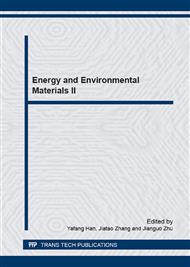p.71
p.76
p.81
p.86
p.91
p.96
p.101
p.107
p.113
Preparation of Polyvinylidene Fluoride (PVDF) Triboelectric Nanogenerators with Different Polymer
Abstract:
Triboelectric nanogenerators have recently been used to harvest mechanical energy from surrounding environment which is of great significance in the field of energy conversion. Electrospinning provides a simple, low cost and versatile method for the generation of 1D nanostrucutures. Nanofiber membranes have many advantages over the commonly used dense film for designing the riboelectric nanogenerators, such as the low wear resistance caused from the internal and excellent external consistency of the electrospinning membranes. In this paper, we produce a variety of polymer films by electro-spinning, and fabricate Polyvinylidene Fluoride (PVDF) triboelectric nanogenerators with different polymer films afterwards. We except to explore the TEG power generation effect, and influencing factors, and then determine the best combination of the results of TEG (PVDF-PHBV). Such a flexible polymer TEG generates output voltage of up to 112 V at a power of 0.045W.
Info:
Periodical:
Pages:
91-95
Citation:
Online since:
March 2015
Authors:
Price:
Сopyright:
© 2015 Trans Tech Publications Ltd. All Rights Reserved
Share:
Citation:


